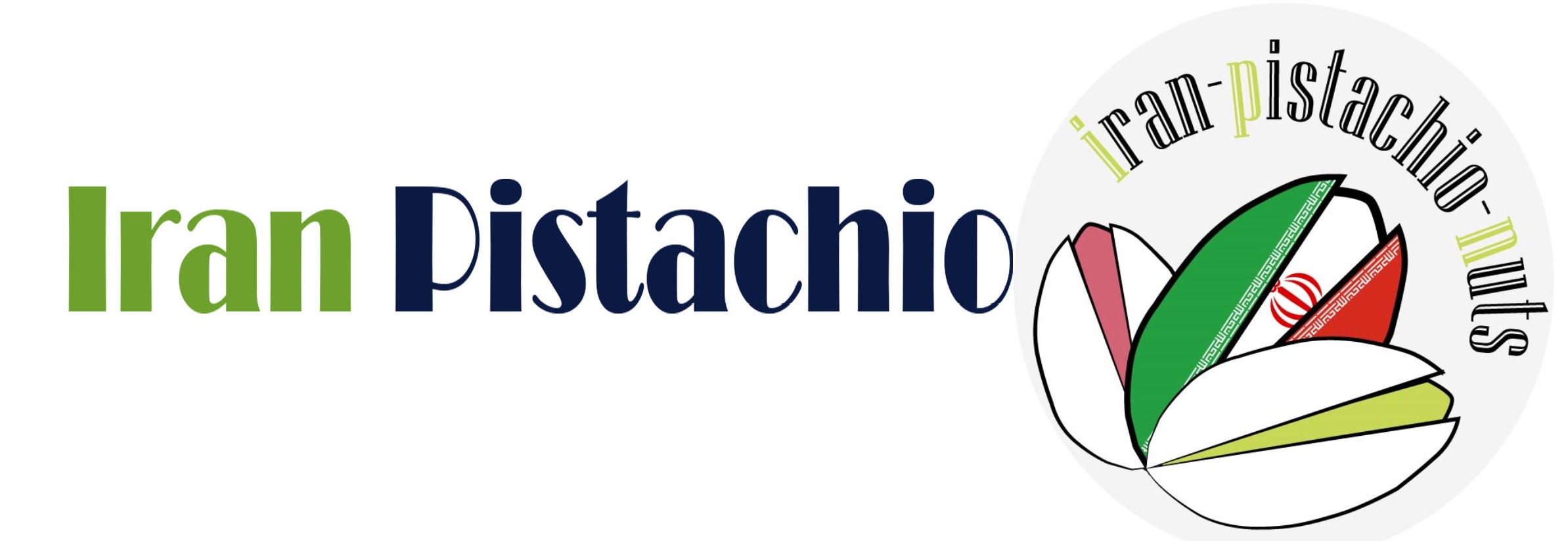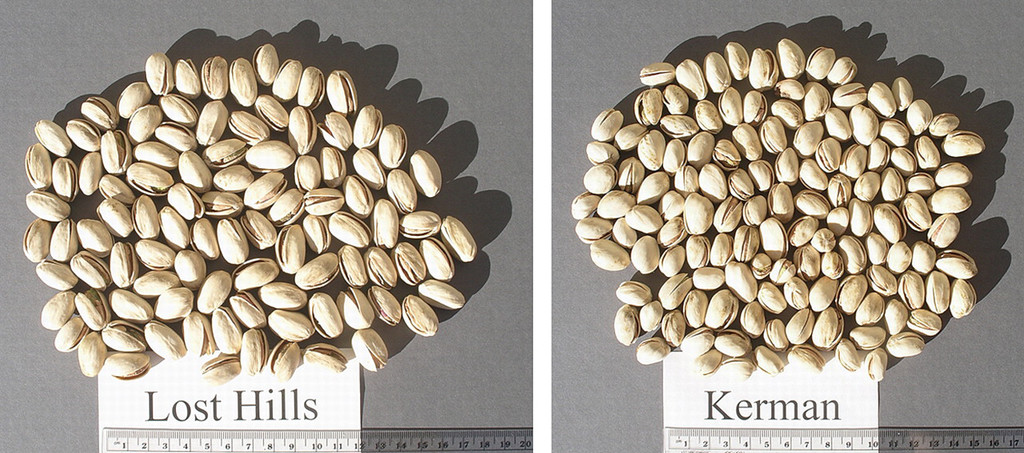Pistachio types in the world
General
Pistachio is one of the most important and popular types of nuts in the world. All pistachio types in world that we know and consume daily is originally from the domestic pistachio tree (Pistacia Vera) belonging to the genus Anacardiaceae. The genus Pistacia or all types of pistachio plants has 11 different species. All plants of this species are trees or shrubs.
Pistachio tree has multiple leaves and serrated (comb compound) that each leaf has the ability to contain one bud. Most lateral buds turn into flowers in the first year and produce pistachio clusters the following year.
The purpose of this article is to introduce the famous pistachio cultivars in the world, focusing on two important producing countries, namely Iran and the United States, and also a summary of the most famous types of pistachio in other producing countries.
General producer countries of pistachio
Iran, USA, Turkey, China, Syria, Greece, Italy, Afghanistan, Tunisia and Spain are the top 10 pistachio producing countries in the world, and by filtering them, the three main pistachio producing countries can be introduced: Iran, USA and Turkey.
Due to the fact that the United States has a high domestic consumption, Iran is considered as the largest exporter of pistachio. Of course, due to climate change and rising prices of raw materials such as pesticides or imported fertilizers, Iran’s production and exports have been greatly reduced.
Types of pistachio trees
The so-called pistachio tree has two bases, meaning that both male and female bases are needed to produce fruit. It is possible to distinguish between male and female trees during flowering.
Experienced experts and gardeners can easily distinguish the male tree from the female by the size of the tree, the shape of the leaves, the shape of the buds and how they are placed on the branches. In the following, we will examine the characteristics of pistachio male flowers and pistachio female flowers.
Profile of pistachio male flowers
- The male tree flowers about 5 to 7 days earlier than the female tree in April, its flowers are clustered and each cluster consists of dense flowers;
The flowers are true without petals and sepals. Each male flower consists of 5 oval flags with a short green stem.
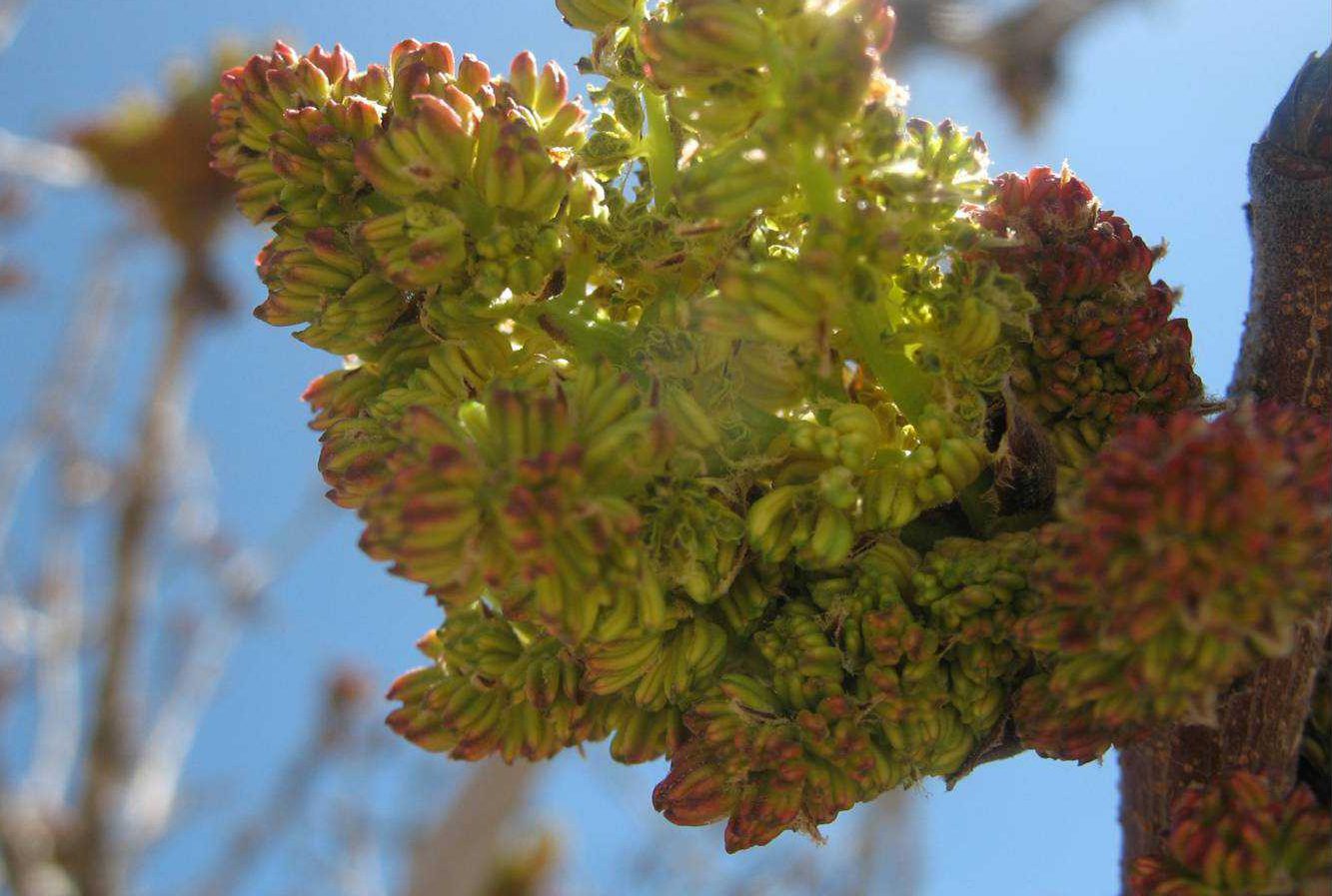
male pistachio tree
Profile of female pistachio flower
- The flower of the female tree is clustered like the male flower, but the shape of the flowers on the cluster is spaced and has a much lower density than the male type;
- Female flowers are green at first, which retains this color for up to two days. If the pollen grains do not reach them at this time and fertilization is not done, the color of the three-branched stigma will change to reddish brown, then the stigma will dry out and fall off.
- If inoculated, female flower clusters begin to grow and the seeds gradually grow.
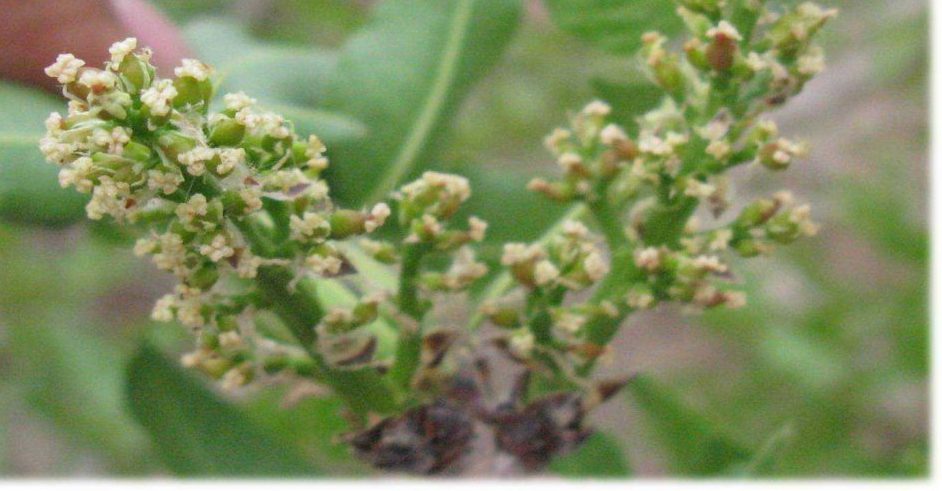
female pistachio tree
Types of pistachio in Iran
There are different divisions for different types of Iranian pistachio. In general, all types of pistachio can be grouped into two categories: hazelnut and almond.
Iran has more than 70 types of female pistachio and a large number of male types, but there is no exact number of their variety. There are reportedly an average of 20 female trees per male tree.
The most famous types of pistachio in Iran are: Akbari, Ahmad Aghaei, Kale ghouchi, Sefid Nogh pistachio, Ouhadi, Mumtaz, Badami Zarand, Khanjari Damghan, Shah Pasand Damghan and Qazvini pistachio.
For example, Kale ghouchi and Ouhadi cultivars are classified in the hazelnut group and Akbari, Ahmad Aghaei, Mumtaz and Sefid Nogh pistachio cultivars are classified in the almond group.
Characteristics of the most famous pistachio cultivars in Iran
Akbari: Its shape is elongated and almond-shaped and has a high percentage of laughter. It is the tallest type of pistachio and the most expensive type is produced.
Ahmad Aghaei: The shape of this pistachio is elongated and tall, but not as big as Akbari. It has the best taste of pistachio and its white skin color is famous.
Ouhadi or Fandoghi: Spherical or hazelnut with a very high percentage of opened shell. Regarding its color, it should be said that the upper color of the brain is purple and the color of the bone skin is cream.
Kale ghouchi: The shape of pistachio is spherical and has a medium opened shell or so-called smiling percentage. The upper color of the brain is dull red and the bone color of the skin is white with moderate opacity. best pistachio size are mostly of this type of pistachios in world.
How to grow different types of pistachio trees
At first, they choose a type of dark pistachio as a base. In Iran, three rootstocks of domestic pistachio (P. vera), Chatlanqush (P. khinjuk) and wild pistachio (P. mutica) are used for pistachio cultivation.
The two bases of pistachio and chatlanqush are used in a very limited way and in more than 99% of the pistachio orchards of the country, the base of domestic pistachio is used. In Iran, Zarand almond root is usually used as a base for domestic pistachio.
Each pistachio types tree has it own options like P.atlantica that has long life between all tree of pistachio types for example oldest pistachio tree in world is one of this type of pistachio trees.
After planting the rootstock, when the tree is ready for grafting, it is time to transplant the desired species to the rootstock. Of course, each rootstock has its own unique characteristics, for example, one of the important characteristics of pistachio rootstock is resistance to pistachio root-producing nematode, and the rootstock has good resistance to drought.
Other countries of the world also use other bases such as P.terebintus, P.atlantica, P. integerrima depending on the environmental conditions or the product they want. Of course, there are a number of links to breeding.
For example, P. atlantica rootstock is one of the most commonly used rootstocks in California due to its high resistance to cold. The problem with this base is susceptibility to Vertilicium disease. Recently, the use of P. integerrima rootstock has received more attention in breeding programs due to its resistance to Verticillium wilt.
A brief description of the types of pistachio grown in the United States
Kerman pistachio seeds were taken to California from Rafsanjan in 1929, and after several years, this cultivar was widely cultivated in the United States.
About 97% of American pistachio are produced from a female cultivar called Kerman and a male cultivar called Peters.
Characteristics of Kerman cultivar: medium growth strength, direct growth, flower production in late March and early April, uniform maturation on the tree, late (fruit production from September to mid-October) and high cooling requirements. The growth rate of Kerman cultivar and P. integerrima rootstock is similar.
Characteristics of Kerman pistachio fruit: round fruit, crisp and suitable kernel, pink and greenish yellow. High percentage of laughter and of course in some years has a high percentage of emptiness.
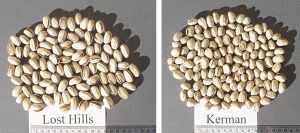
pistachio types of world
The figure of Peters was introduced by Mr. Peters, which probably originated in Armenia. This cultivar produces suitable pollen grains and with about 3 weeks of flowering period, has a good overlap with Kerman female cultivar for pollination of this cultivar. Other male cultivars include “Kaz”, “Ell”, “Chico” and “Randy”, which may have originated in Azerbaijan.
Other pistachio cultivars grown in California
Red Aleppo: One of the first varieties cultivated in California, it has an annual, early ripening, has smaller and drier fruits compared to Kerman, and has hanging branches.

red aleppo
“Joley” Variety: The product of American breeding programs, some features compared to Kerman cultivar are earlier flowering (one week), earlier (one week), percentage of laughter similar to Kerman, with annuals similar to Kerman.
Some types of pistachio in California belong to other countries and seem to taste better than the Kerman variety (especially small fruit cultivars from Italy).
Golden Hill and Lost Hill cultivars have been obtained from breeding programs in the United States and may replace the Kerman cultivar in the future. These cultivars are earlier and have a higher laugh rate and have less infection problems than Kerman cultivar.
Randy male cultivar: The first flowering occurs 10 to 15 days before Peters, its flowering period overlaps with Kole Ghochi cultivar as well as Golden Hill and Lost Hill cultivars.
Characteristics of famous pistachio cultivars in other countries
Ashouri cultivar known as “Red Aleppo”: green skin color, medium-sized fruit, with a light brown hull with black spots, good quality, cultivated in Syria.
“Uzun” cultivar: medium fruit size, elongated and smooth skin, cultivated in Turkey.
“Kirmizi” cultivar: medium fruit size, red skin color. This cultivar along with “Uzun” cultivar are among the most famous cultivars in Turkey.
Qom “Kouchka”: thick fruit, creamy white skin color and good fruit quality.
“Mateur” cultivar: elongated fruit, medium size, greenish-yellow skin color, good fruit quality, was selected from Tunisia and showed good results in Spain.
Larnaka cultivar: Medium fruit size, less elongated than “Mateur” fruit. Its origin is Cyprus. Cultivation of this cultivar in Greece and Spain has shown good results.
Aegina cultivar: Medium-sized, elongated fruit, similar to Mateur. Originally from Greece and showed good results in Spain.
Cultivar “Bianca” or synonymous with “Napoletana”: small to medium fruit size, elongated fruit shape, dark green fruit color, widely cultivated in Italy.
“Sirora” cultivar: has a red skin color, derived from the breed of “Red Aleppo” cultivar, and has a green fruit kernel, good quality and high yield, and is cultivated in Australia.
